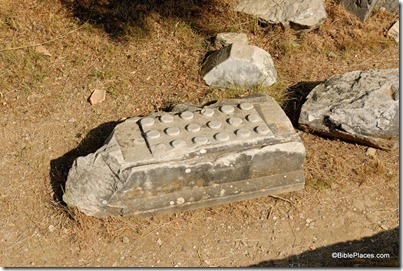Aren Maeir has posted the schedule of the 31st Annual Conference of the Martin (Szusz) Department of Land of Israel Studies and Archaeology at Bar-Ilan University.
Gary Byers has a report on discoveries from the first week of excavating Khirbet el-Maqatir.
Stephen Gabriel Rosenberg has posted his review of “Archaeology in Israel Update—April 2011.”
He reviews the demonstrations over graves in Jaffa, Jordan’s demand for the return of fake metal codices, Jacobivici’s “Nails of the Cross,” and the politicization of the Kenyon Institute (formerly the British School of Archaeology in Jerusalem).
The ASOR blog has several dozen links to news from the world of archaeology.
Israel is moving forward with plans to construct the largest desalination plant in the world. When constructed, 65% of Israel’s water consumption will come from desalinated sources.
Kevin DeYoung’s post on “being better Bereans” is broader than the usual focus of this blog, but I suspect that many readers attracted to a blog like this one may be tempted to make some of the mistakes he describes. I recommend it highly.
If you’ve been waiting to pick up the new book by Ronny Reich, Excavating the City of David: Where Jerusalem’s History Began, do so this weekend, while the price is knocked down from $50 to $30 at the Biblical Archaeology Society website. They also have a good deal on Hershel Shanks, Jerusalem’s Temple Mount. And the third edition of Ancient Israel. The sale ends at 11:59 pm on Monday.
